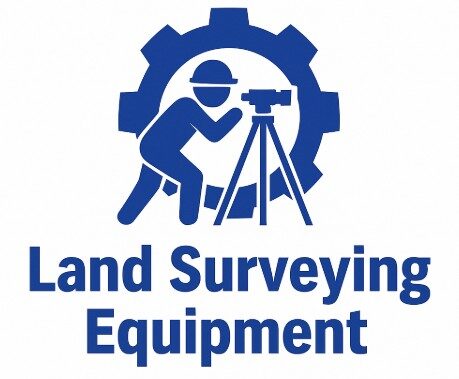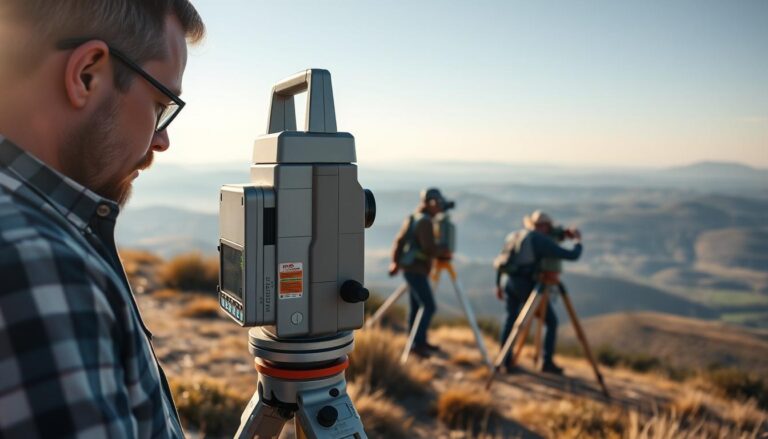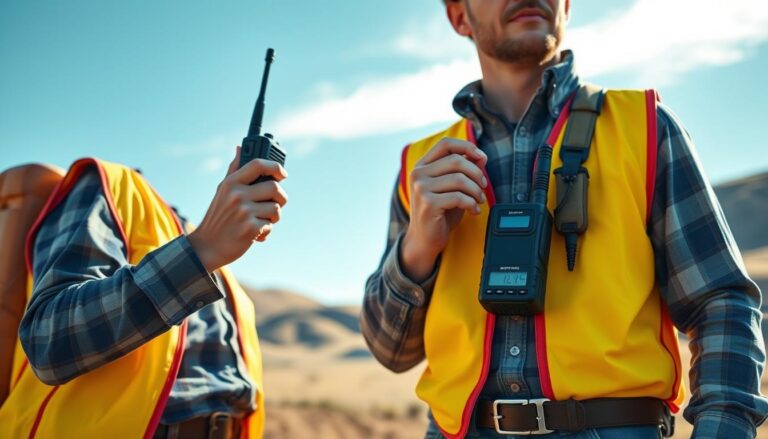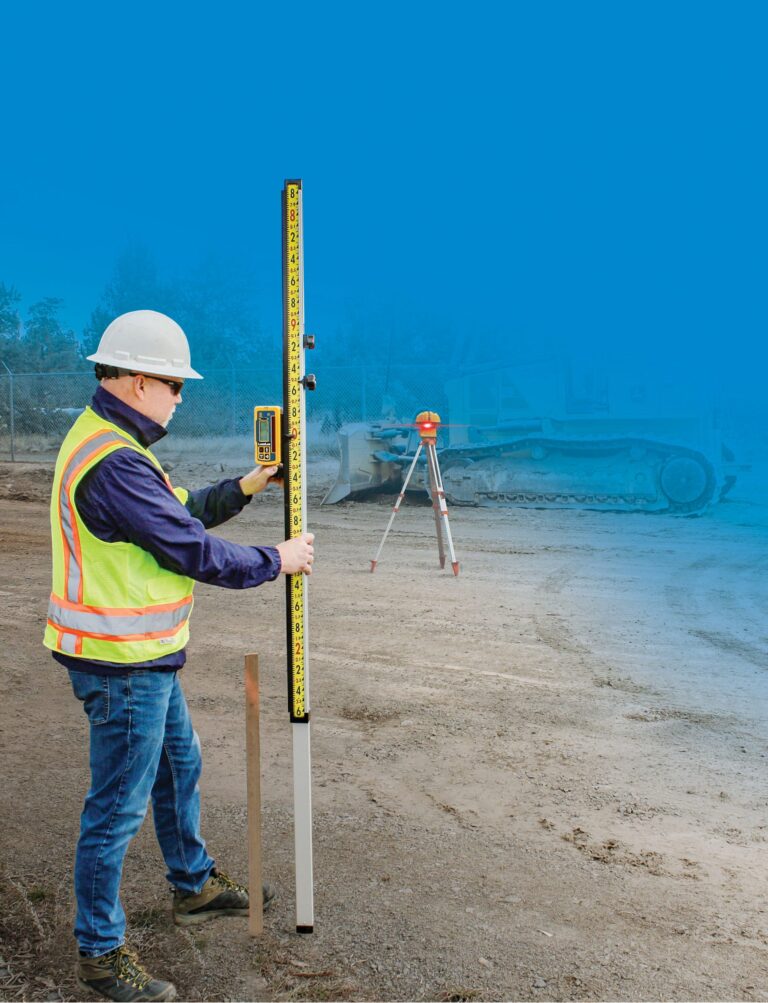The Ultimate Guide to Surveying Roll Flagging
Surveying roll flagging is a crucial tool in construction and land surveying, used for marking locations, boundaries, and objects in outdoor environments. Flagging tape, a thin, flexible, and highly visible ribbon, is used to provide clear visibility and accuracy.
The use of flagging tape dates back to the early days of surveying, and over time, it has evolved to include various materials and types. One notable example is Presco’s Texas Flagging, a well-known brand that has become synonymous with quality flagging tape. The APWA color code system is also widely used in the industry to standardize the color-coding of flagging tape.
Understanding the basics of surveying roll flagging, including its history, materials, and types, is essential for professionals in the construction and land surveying industries.
Key Takeaways
- Flagging tape is a thin, flexible, and highly visible ribbon used for marking locations, boundaries, and objects.
- Presco’s Texas Flagging is a well-known brand in the industry.
- The APWA color code system is used to standardize the color-coding of flagging tape.
- Surveying roll flagging has a rich history and has evolved over time.
- Understanding the basics of surveying roll flagging is essential for professionals in the industry.
What is Surveying Roll Flagging and Why It Matters
In the realm of land surveying and construction, roll flagging plays a vital role in ensuring that projects are executed with precision and safety. Surveying roll flagging is a crucial tool that serves multiple purposes on job sites.
Definition and Basic Functions
Surveying roll flagging, commonly known as flagging tape, is a type of tape used to mark boundaries, identify trees for logging, and indicate underground utilities. It is available in various colors, each associated with specific uses or industries. The basic function of flagging tape is to provide a clear visual indication of important features on a job site.
Importance in Construction and Land Surveying
The importance of flagging tape in construction and land surveying cannot be overstated. It is used to mark property boundaries, utility lines, and other critical features that are essential for the successful execution of a project. Flagging tape is a simple yet effective tool that enhances the accuracy and efficiency of surveying tasks.
Safety and Communication Benefits
One of the significant benefits of using roll flagging is improved safety on job sites. By clearly marking hazards and important features, flagging tape helps prevent accidents and ensures that workers are aware of their surroundings. Additionally, flagging tape facilitates communication among team members by providing a universal visual language that transcends verbal instructions.
Overall, surveying roll flagging is an indispensable tool in the construction and land surveying industries, offering numerous benefits in terms of safety, communication, and project accuracy.
The History and Evolution of Roll Flagging in Surveying
From humble beginnings to its current sophisticated state, roll flagging has a rich history in the surveying industry. The evolution of flagging tape has been a crucial aspect of this history, transforming from simple marking tapes to complex, color-coded systems that play a vital role in modern surveying.
Origins of Flagging Tape
The use of flagging tape in surveying dates back to the early days of land surveying, where simple tapes were used to mark boundaries and reference points. The development of more durable materials and color-coding systems marked a significant turning point in the evolution of flagging tape, enabling surveyors to communicate more effectively and work more efficiently.
Modern Developments and Innovations
In recent years, flagging tape has undergone significant innovations, including the introduction of biodegradable options and advanced color-coding systems. These developments have not only improved the functionality of flagging tape but also addressed environmental concerns associated with its use.
Industry Standardization
The standardization of flagging tape, particularly through systems like the APWA Color Code, has been instrumental in enhancing its utility across different surveying contexts. This standardization has facilitated clearer communication among surveyors, construction teams, and utility companies, reducing errors and improving project outcomes.
| Era | Flagging Tape Characteristics | Impact on Surveying |
|---|---|---|
| Early Days | Simple, non-durable tapes | Limited functionality, prone to errors |
| Modern Era | Durable, color-coded, biodegradable options | Improved efficiency, reduced environmental impact |
| Current State | Advanced materials, standardized color-coding | Enhanced accuracy, better communication among teams |
Everything You Need to Know About Surveying Roll Flagging: Materials and Types
Roll flagging, a staple in surveying, comes in various materials and types, each suited to different applications and environmental conditions. The choice of material and type is crucial for the success of surveying projects, whether it’s for land surveying, construction, or marking property boundaries.
Vinyl vs. Biodegradable Options
Surveying roll flagging is primarily made from two types of materials: vinyl and biodegradable alternatives. Vinyl flagging is known for its durability and weather resistance, making it a popular choice for long-term projects. On the other hand, biodegradable flagging offers an eco-friendly solution, reducing environmental impact without compromising on visibility.
The decision between vinyl and biodegradable flagging depends on the project’s specific needs and environmental considerations. For instance, in environmentally sensitive areas, biodegradable flagging is preferred to minimize ecological footprint.
Standard vs. Specialty Flagging
Standard flagging tapes are designed for general use, offering a range of colors for different applications. Specialty flagging, however, is tailored for specific tasks, such as high-visibility flagging for safety purposes or colored flagging for coding different types of markers or boundaries.
Weather-Resistant Properties
The weather-resistant properties of surveying roll flagging are critical, especially for projects exposed to various environmental conditions. Vinyl flagging, for example, is treated to withstand rain, sunlight, and temperature fluctuations, ensuring it remains visible and intact throughout the project duration.
Choosing the Right Flagging for Your Project
Selecting the appropriate flagging involves considering several factors, including the project’s duration, environmental conditions, and specific surveying needs. For land surveying and property boundary marking, the choice of flagging material and color can significantly impact the project’s efficiency and accuracy.
By understanding the different materials and types of surveying roll flagging, professionals can make informed decisions that enhance the effectiveness of their surveying equipment and contribute to the project’s overall success.
The APWA Color Code System Explained
Understanding the APWA Color Code System is essential for safe and efficient construction practices. This standardized system is used to mark different types of utilities and features on construction sites, ensuring that workers can identify them quickly and accurately.
Origins and Purpose of the Color System
The APWA (American Public Works Association) Color Code System was developed to provide a uniform method of marking utilities and features on construction sites. Its primary purpose is to enhance safety and facilitate communication among construction workers, surveyors, and utility companies.
Detailed Breakdown of Each Color
The APWA Color Code System utilizes a range of colors to signify different types of utilities and features. Here’s a breakdown of the colors and their meanings:
- White: Proposed excavation routes and limits
- Pink: Temporary survey markings
- Red: Electrical power lines and cables
- Yellow: Gas, oil, and petroleum materials
- Orange: Telecommunications and cable TV
- Blue: Potable water
- Purple: Reclaimed water and irrigation
- Green: Sewer and drain lines
Each color in the APWA system is carefully chosen to represent a specific type of utility or feature, making it easier for workers to identify potential hazards and understand the layout of the construction site.
Legal Requirements and Compliance
While the APWA Color Code System is not always legally mandated, it is widely adopted and recommended by many construction and surveying organizations. Compliance with this system can help construction companies avoid potential liabilities and ensure a safer working environment.
By understanding and implementing the APWA Color Code System, construction professionals can significantly reduce the risk of accidents and improve overall project efficiency.
Presco’s Texas Flagging: Industry Standard for Professionals
The reputation of Presco’s Texas Flagging as an industry standard is built on its exceptional quality. This recognition is not accidental but the result of years of delivering high-grade surveying tools that professionals can rely on.
The Story Behind the Texas Logo
Presco’s Texas Flagging has a rich history that dates back to its origins in Texas, where the company first started producing high-quality flagging tape. The Texas logo has become a symbol of durability and reliability, traits that are highly valued in the surveying industry.
Product Range and Specifications
Presco offers a wide range of flagging products, including vinyl and biodegradable options, catering to different project needs. The specifications of their products are designed to meet the rigorous demands of various surveying tasks.
Why Professionals Choose Presco
Professionals in the surveying industry prefer Presco’s Texas Flagging due to its consistency and performance. The products are designed to be highly visible and durable, making them ideal for use in challenging environments.
Case Studies: Texas Flagging in Action
Several case studies have demonstrated the effectiveness of Presco’s Texas Flagging in real-world applications. For instance, in a recent construction project, the use of Presco’s flagging tape significantly improved site marking efficiency.
| Product | Material | Durability |
|---|---|---|
| Vinyl Flagging | PVC | High |
| Biodegradable Flagging | Bioplastics | Medium |
Practical Applications of Roll Flagging in Different Surveying Contexts
Roll flagging is essential in various surveying applications, enhancing accuracy and efficiency. Its versatility makes it a crucial tool for surveyors across different contexts.
Boundary Surveys and Property Line Marking
In boundary surveys, roll flagging is used to mark property lines clearly. This is particularly important in land surveying, where defining property boundaries is critical. Accurate marking helps prevent disputes and ensures that construction or development projects stay within legal boundaries.
Construction Site Layout and Planning
During the construction site layout and planning phase, roll flagging aids in demarcating areas for different activities. It helps in organizing the site efficiently, ensuring that all stakeholders are aware of the designated zones. This enhanced organization contributes to a smoother workflow and reduced errors.
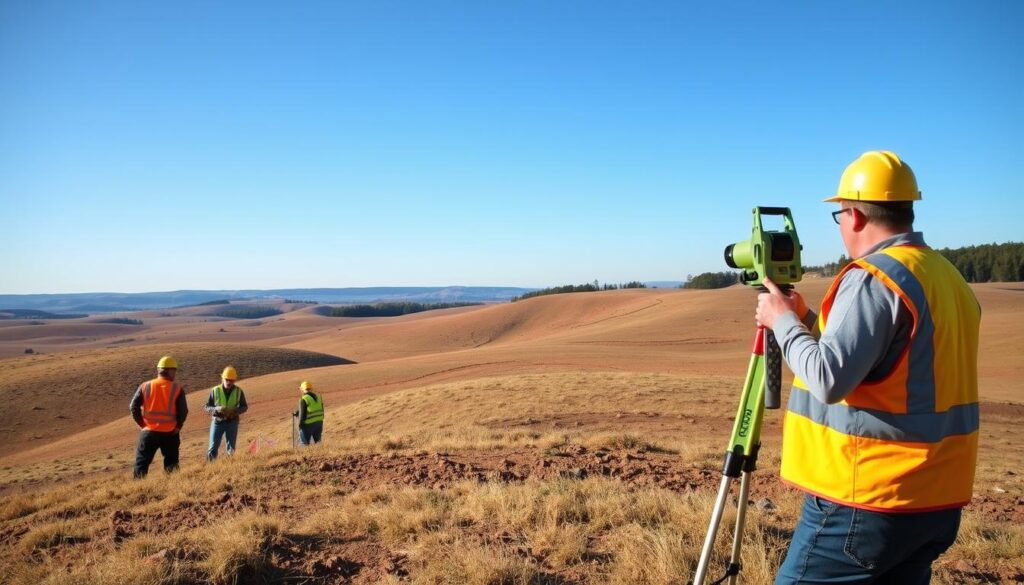
Utility Location and Marking
Utility location and marking are critical tasks where roll flagging proves invaluable. By clearly marking the locations of underground utilities, surveyors can prevent accidental damage during excavation. This not only saves costs but also enhances safety on the construction site.
Topographic Surveys
In topographic surveys, roll flagging is used to mark significant features and changes in terrain. This helps surveyors to accurately map the landscape, which is essential for planning and development projects. The use of roll flagging in this context ensures that all relevant details are captured and represented accurately.
| Surveying Context | Application of Roll Flagging | Benefits |
|---|---|---|
| Boundary Surveys | Marking property lines | Prevents boundary disputes |
| Construction Site Layout | Demarcating activity areas | Enhances site organization |
| Utility Location | Marking utility locations | Prevents accidental damage |
| Topographic Surveys | Marking terrain features | Ensures accurate mapping |
Best Practices for Using Roll Flagging in Different Environments
Different environments demand tailored approaches to using roll flagging for optimal results. The effectiveness of roll flagging as a crucial piece of surveying equipment hinges on its appropriate use in various settings.
Urban Construction Sites
In urban construction sites, roll flagging is used for marking out areas for safety and organizational purposes. It’s essential to choose flagging that is highly visible against the urban backdrop.
Using brightly colored flagging can help in distinguishing between different areas of the site, enhancing safety and efficiency.
Rural and Wilderness Surveying
In rural and wilderness areas, the durability of roll flagging is tested by the environment. Here, flagging needs to be resistant to weather conditions and wildlife.
Biodegradable options are often preferred in these areas to minimize environmental impact.
Adverse Weather Conditions
Adverse weather conditions, such as heavy rain or intense sunlight, can affect the visibility and durability of roll flagging. Using weather-resistant flagging is crucial in these conditions.
Regular inspection and replacement of flagging are necessary to maintain visibility and safety.
High-Traffic Areas
In high-traffic areas, the flagging must be extra visible and durable to withstand constant exposure. Using reinforced flagging can help in maintaining the integrity of the markings.
Strategic placement of flagging, such as at eye level, can enhance visibility and reduce the risk of accidents.
By adapting roll flagging practices to the specific demands of different environments, professionals can ensure effective marking out and enhance overall project safety.
Environmental Considerations and Sustainability
With the rise of eco-conscious practices, the surveying industry is shifting towards more sustainable methods. One area of focus is the use of roll flagging in land surveying, where traditional materials and practices are being reevaluated for their environmental impact.
Eco-Friendly Flagging Options
The development of eco-friendly flagging materials is a significant step towards reducing the environmental footprint of surveying activities. Biodegradable flagging tape, made from materials such as PLA (Polylactic Acid), is becoming increasingly popular as an alternative to traditional vinyl flagging.
Proper Disposal and Cleanup
Proper disposal and cleanup of flagging tape are crucial to minimizing its environmental impact. Surveyors should ensure that all flagging is removed after use and disposed of according to local regulations.
| Flagging Type | Material | Biodegradability |
|---|---|---|
| Traditional Flagging | Vinyl | No |
| Eco-Friendly Flagging | PLA | Yes |
Reducing Environmental Impact
Surveyors can reduce the environmental impact of their work by choosing flagging materials that are less harmful to the environment and by adopting practices that minimize waste.
Biodegradable Alternatives
Biodegradable flagging alternatives offer a promising solution for reducing the environmental footprint of surveying activities. 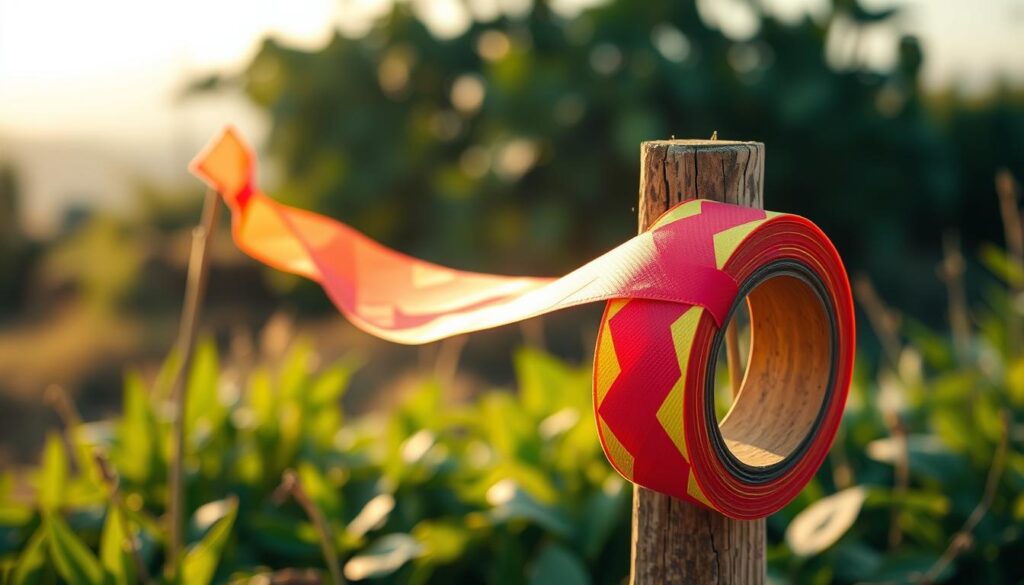 By adopting these alternatives, surveyors can contribute to a more sustainable future.
By adopting these alternatives, surveyors can contribute to a more sustainable future.
Conclusion: The Future of Surveying Roll Flagging
Understanding everything you need to know about surveying roll flagging is crucial for professionals in the construction and land surveying industries. This guide has covered the definition, history, materials, and best practices for using roll flagging, as well as the importance of the APWA Color Code System and the role of industry leaders like Presco.
As surveying tools continue to evolve, the future of roll flagging is likely to involve advancements in materials and technologies, with a growing focus on sustainability. Innovations such as biodegradable flagging options and weather-resistant properties will play a significant role in shaping the industry.
By staying informed about the latest developments in surveying roll flagging, professionals can ensure they are using the most effective and efficient tools for their projects. As the industry continues to grow and evolve, the importance of reliable and high-quality surveying tools will remain a top priority.
